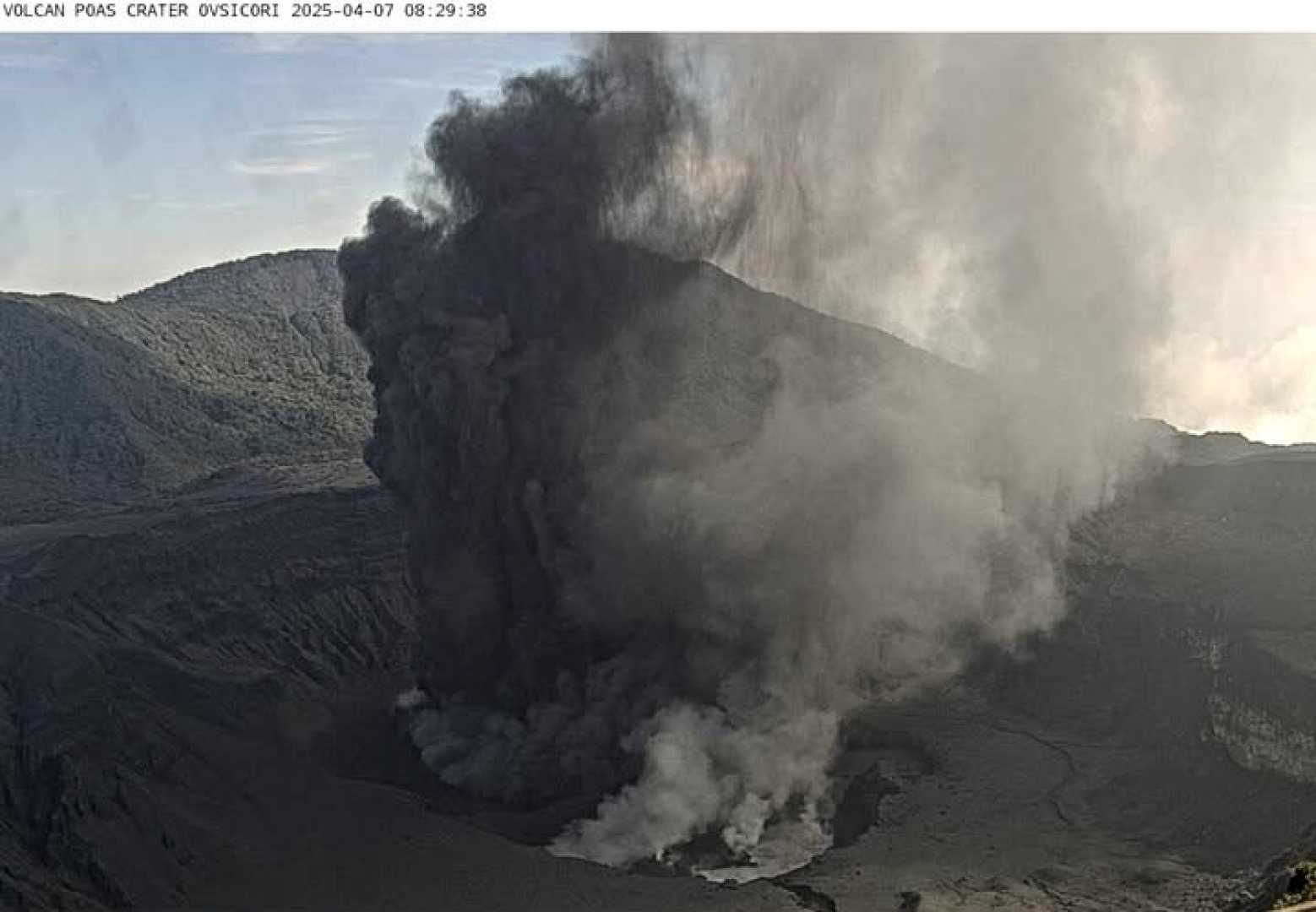News
Tourism Hits Rock Bottom Amid Poás Volcano Eruptions

SAN JOSE, Costa Rica — The recent eruptions of Poás Volcano have severely impacted the economies of surrounding communities dependent on tourism, with local businesses facing significant losses due to drastically reduced visitation. The situation, which escalated on March 26, has left shopkeepers, restaurants, and vendors scrambling for survival.
The National System of Conservation Areas (SINAC) and the Ministry of Environment and Energy (MINAE) closed Poás Volcano National Park following intense volcanic activity—including ash emissions and phreatic eruptions, with ash clouds reaching up to 1,500 meters on April 8. The Volcanological and Seismological Observatory of Costa Rica (OVSICORI) reported over 200 high-frequency earthquakes on March 18, prompting authorities to issue an orange alert for the region.
“Since the park closed, tourists have stopped coming. This generates fear and keeps people from buying. We’re surviving on regular customers, but our main income comes from tourism,” said Víctor Murillo, a strawberry vendor in Poasito. Local business owners emphasized the economic fallout, noting their reliance on the estimated 200,000 annual visitors to the park.
The closure interrupts the typical high-traffic periods, such as Holy Week and Easter, devastating for local businesses. José Luis Rodríguez, another local entrepreneur, lamented, “Easter is usually chaotic with visitors enjoying the area. Now, it’s a concern for restaurants and shops because people aren’t coming.” Some establishments have reported minimal sales, with some businesses sitting idle without a customer for days.
Fabiola Carrillo, an employee at a local restaurant, stressed the drastic decrease in revenues: “We’re deeply affected. We work to support our families. Sales have dropped from about 300,000 colones daily to barely 30,000 colones.” Ongoing expenses such as salaries and loans intensify the burden on businesses that typically flourish during peak seasons.
Compounding the crisis, misinformation circulating on social media has deterred potential visitors even further. Ronald Loría, a shopkeeper in the area, noted, “Shopkeepers question the erroneous information spread on social media, which scares people away from stores and attractions.” Posts on platforms like X have included unverified claims about the volcano’s activity, amplifying public fears.
Costa Rican authorities have urged the public to obtain updates from official channels, including SINAC’s website and local press sources. The U.S. Embassy in San José issued a travel advisory on March 28, warning visitors to avoid the Poás vicinity until conditions stabilize. The Ministry of Health has advised residents in nearby towns—including Alajuela, Grecia, and Sarchí—to use N95 masks and limit outdoor activities due to risks posed by sulfur dioxide and ashfall.
Despite these challenges, some community members remain optimistic regarding recovery. SINAC has initiated options for visitors to reschedule trips or request refunds via email, signaling their efforts to manage the crisis. However, without a definitive reopening date for the park, the economic strain on local communities continues to escalate.












